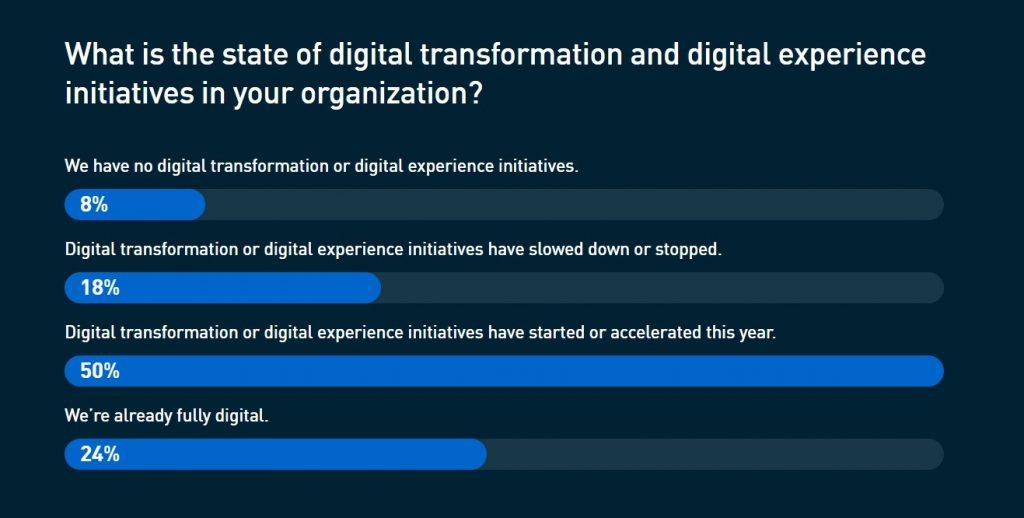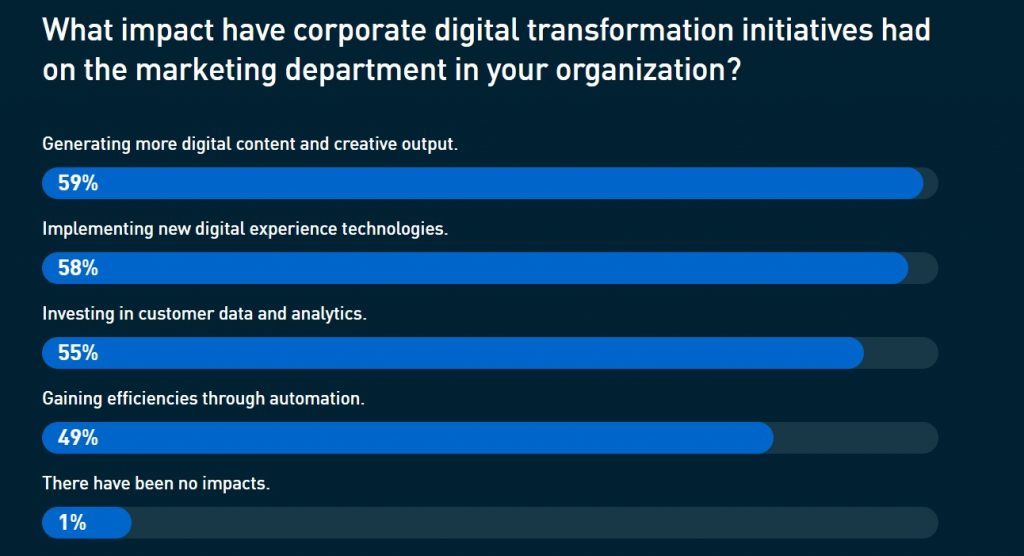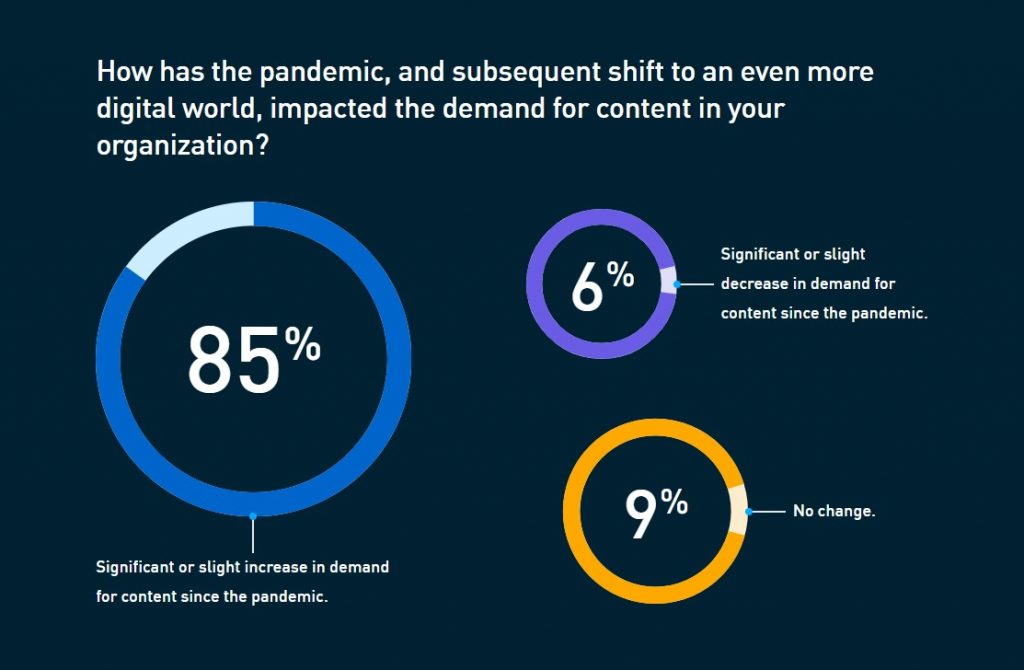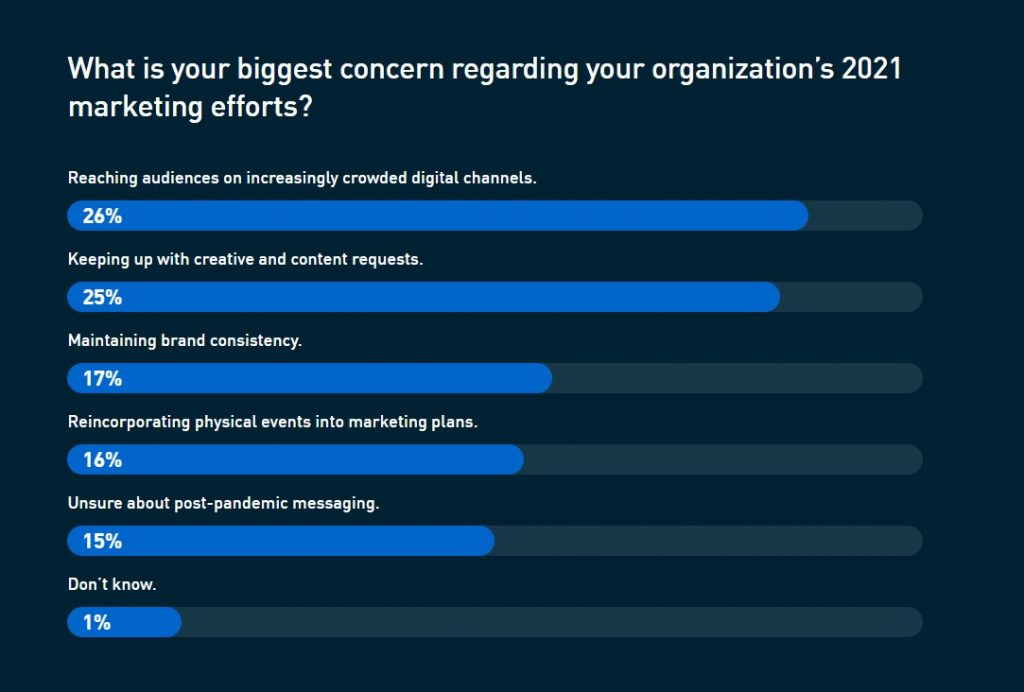The creative content platform generator, Bynder, conducted an extensive study on branding and creative marketing with 1,600 marketing and creative professionals from a variety of countries and sectors. Here are the 5 highlights.
1. The pandemic has accelerated digital business transformations
This is not a big surprise, given the impossibility or constraints for trade or physical uses over the past year. But the proportions are not insignificant: half of the marketers surveyed say they accelerated digital transformation and the digital experience in 2021, knowing that nearly a quarter (24%) are already “fully digital”.

2. Digital initiative means more content for marketers
First response to the question “What are the top three impacts of digital transformation initiatives on marketing departments?”? Generating more digital content and creative output at 59% (not far from implementing new digital experience technologies (58 %), and investing in customer data analytics (55 %)).

In other words, digitization is a work-overload for marketing professionals, although an overwhelming majority (89%) believe technology will help creativity in their department.
The pandemic has definitely reshaped marketing. You have to shift from thinking about billboards and huge events to more distributed digital content that’s bite-sized and can be put on multiple channels and that elevates your brand and builds trust. You’re competing for attention right now, indicates Sarah Franklin, CMO at Salesforce.”

3. Communicate, yes, but not in any way
The obvious corollary of the increase in content creation is… the issue with saturation that causes with the targets! In other words: how to capture the attention of its audience on increasingly competitive channels. This is the number one issue raised by respondents (26%).
Also to be compared with the 3rd answer on the question of the main issues in 2021: preserving the corporate image.

The study also points to a certain discrepancy in the way the content crisis is approached. 79% of respondents in executive roles say they are “completely confident” in their organization’s ability to meet the creative content demands for 2021… compared to 62% of marketers in video, design or creative roles.
4. Ad hoc requests and content adjustments: the biggest time-wasters in creation
Although marketing and creative directors may have different confidence levels of their organization’s ability to meet the creative content demands of 2021, they agree on what is counterproductive: 74% of respondents in executive roles report that creative teams spend too much time on minor adjustments.
For example, the “repetitive creation tasks such as format size and copy changes”. 13% of marketers worldwide confirm that some meetings could have been a simple email.
For video, design or creative marketers, isolated requests that do not serve a larger purpose represent the biggest time-waster… While only 11% of people in leadership positions report the same thing!
5. Creative automation, the future of marketers?
The vast majority (89%) of respondents said that technology will help creativity in marketing. Over half of respondents said automation will increase efficiency, free up time for more important tasks, and/or improve the company’s brand.

Thoughts are rapidly changing about this: in 2020, 23% of marketing professionals reported that branding cannot be automated. In 2021, only 1% said the same!

Methodology:
Bynder commissioned independent market research specialist Vanson Bourne to undertake the research for this report. A total of 1,600 marketing and creative respondents, including senior executives, were interviewed between January and March 2021. Respondents come from the US (600), the UK (400), Germany (225), France (225) and the Netherlands (150). Respondents had to be from organizations with at least 250 employees.




